- Découvrez les collections
- Notice d'oeuvre



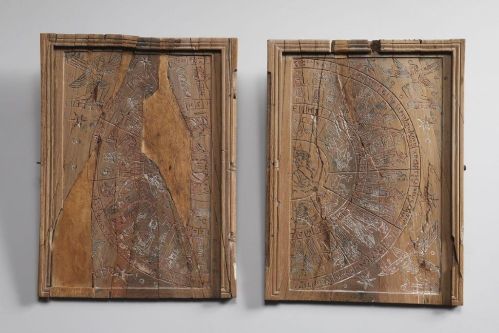
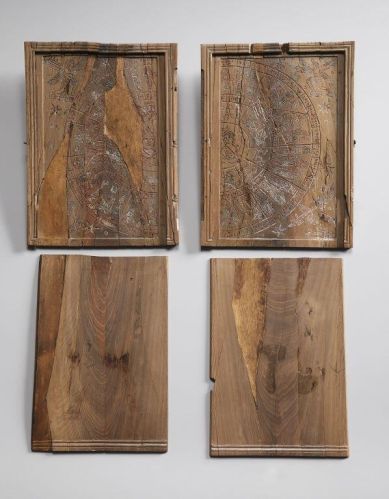
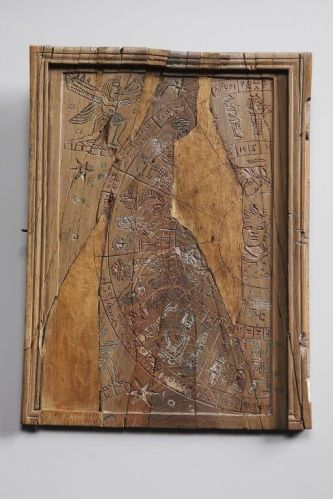
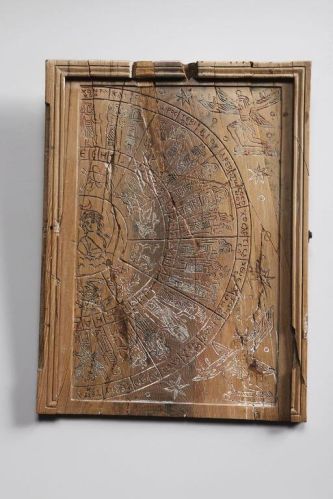
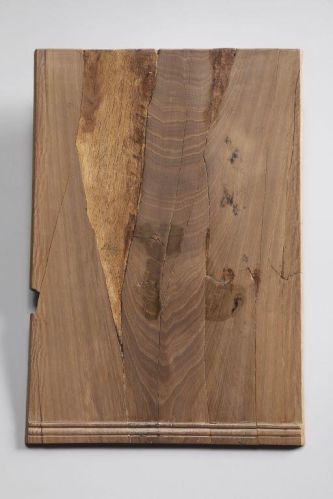
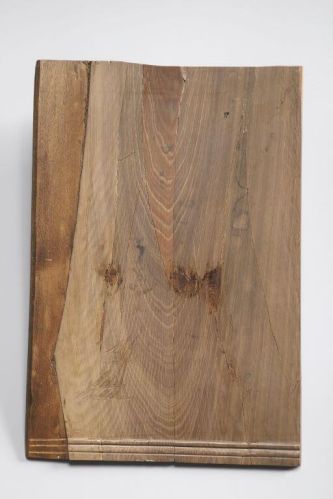
H. 18,6 cm ; l. 14 cm (chaque tablette)
M0536_2013.0.217
Ces tablettes en ivoire constituent incontestablement l’une des découvertes les plus singulières réalisées dans l’agglomération antique de Grand. Elles ont été retrouvées au fond d’un puits où elles avaient été rejetées après avoir été brisées intentionnellement, sans doute dans l’intention de les désacraliser. Le remontage des cent quatre-vingt-huit fragments a montré qu’il s’agissait de deux tablettes à deux volets (diptyques). Au centre de cette représentation de l’univers règnent Sol et Luna, identifiables à leurs attributs : coiffure radiée et fouet pour le soleil, croissant pour la lune. Les douze signes du zodiaque qui les environnent, inspirés vraisemblablement d’un modèle égyptien, sont surmontés de leur nom en grec. Les divinités égyptiennes de la troisième couronne symbolisent les décans dont le nom est reporté au-dessus, en vieux copte. Enfin, les créatures ailées qui se développent dans les angles peuvent être interprétées comme des représentations des Vents qui font mouvoir l’univers, évoqué ici par les étoiles. Ces tablettes, dont l’usage était réservé aux initiés, servaient à l’établissement d’horoscopes ainsi qu’à l’astrologie médicale. Elles pouvaient également être liées à la pratique de la magie, ces deux approches étant complémentaires dans l’Antiquité.
Les douze signes du zodiaque représentés sur les volets du diptyque sont organisés autour du couple Sol et Luna. Cette dernière, dénommée Séléné dans la mythologie grecque, est décrite comme une femme à la beauté étincelante portant une lune en croissant retournée.
Soeur d’Hélios, elle a eu plusieurs amants, notamment Zeus à qui elle a donné deux filles, Pandia et Hersé. Quant au Soleil, Hélios dans la mythologie grecque, il est progressivement assimilé à Apollon, mais sa fonction demeure, comme le rapporte Homère, de voir et d’entendre toute chose. Sa présence sur des supports de divination n’est donc pas fortuite. Le culte du dieu solaire se développe en Egypte à partir de l’Ancien Empire (2647-2150 av. J.-C.), où il est assimilé au dieu Rê et devient une divinité principale.
Les douze signes du zodiaque représentés sur les volets du diptyque sont organisés autour du couple Sol et Luna. Cette dernière, dénommée Séléné dans la mythologie grecque, est décrite comme une femme à la beauté étincelante portant une lune en croissant retournée.
Soeur d’Hélios, elle a eu plusieurs amants, notamment Zeus à qui elle a donné deux filles, Pandia et Hersé. Quant au Soleil, Hélios dans la mythologie grecque, il est progressivement assimilé à Apollon, mais sa fonction demeure, comme le rapporte Homère, de voir et d’entendre toute chose. Sa présence sur des supports de divination n’est donc pas fortuite. Le culte du dieu solaire se développe en Egypte à partir de l’Ancien Empire (2647-2150 av. J.-C.), où il est assimilé au dieu Rê et devient une divinité principale.
These ivory tablets are irrefutably one of the rarest finds made in the ancient town of Grand. They were discovered at the bottom of a well, where they had been thrown after being intentionally broken. Whoever was behind that act no doubt sought to remove their sacred power. Two tablets (diptychs) were reassembled from one hundred and eighty-eight fragments. Sol and Luna can be easily identified at the centre of this representation of the universe: radiating hair and whip for the sun, crescent for the moon. The twelve signs of the zodiac surround them and were likely inspired from an Egyptian model. Their names in Greek can be seen above them. The Egyptian divinities of the third crown symbolise the decans (their names are written above, in Old Coptic). Finally, the winged creatures in the corners can be interpreted to represent the Winds that move the universe, which is represented here by the stars. Only those qualified were allowed to use these tablets, which served to establish horoscopes and medical astrology. They also may have been linked to the practice of magic, since the two were considered complementary methods in Antiquity.
The twelve signs of the Zodiac represented on both parts of the diptych are arranged around the couple Sol and Luna. The latter, known as Selene in Greek mythology, is portrayed as a woman of dazzling beauty who holds a reversed crescent Moon. The sister of Helios, she
had several lovers, including Zeus to whom she gave two daughters, Pandia and Herse. As for the Sun, known as Helios in Greek mythology, he was gradually assimilated with Apollo, but as Homer tells us, his role of seeing and hearing everything remained unchanged. His presence on divination materials is, therefore, no accident. The cult of the sun-god grew in Egypt from the time of the Old Kingdom (2647-2150 BC), where he was assimilated with the god Ra and became a major deity.
The twelve signs of the Zodiac represented on both parts of the diptych are arranged around the couple Sol and Luna. The latter, known as Selene in Greek mythology, is portrayed as a woman of dazzling beauty who holds a reversed crescent Moon. The sister of Helios, she
had several lovers, including Zeus to whom she gave two daughters, Pandia and Herse. As for the Sun, known as Helios in Greek mythology, he was gradually assimilated with Apollo, but as Homer tells us, his role of seeing and hearing everything remained unchanged. His presence on divination materials is, therefore, no accident. The cult of the sun-god grew in Egypt from the time of the Old Kingdom (2647-2150 BC), where he was assimilated with the god Ra and became a major deity.


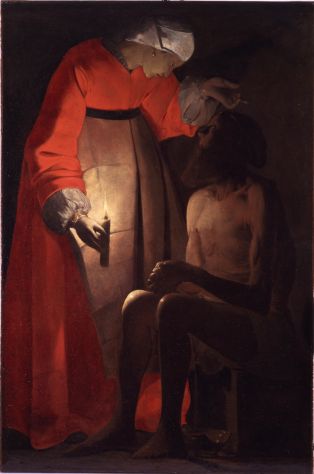
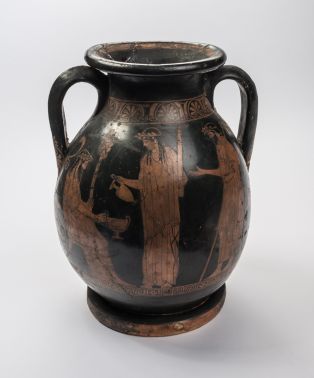
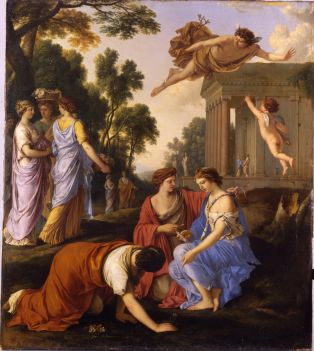
 Copyright© WebMuseo 2017 - 2024
Copyright© WebMuseo 2017 - 2024